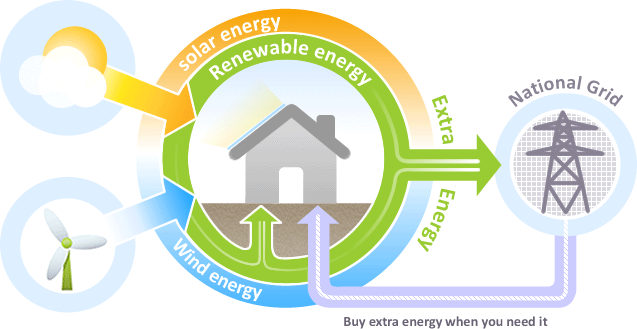
The Feed-in Tariff is the government scheme that buys excess renewable energy generated by UK households
What is the Feed-in Tariff?
The Feed-in Tariff scheme — often referred to as FiT — was introduced in 2010 to encourage UK households to invest in renewable energy generation methods such as solar panels and micro CHP.
With the Feed-in Tariff programme, those who generate their own green electricity will be paid for doing so by selling it back to the grid via their energy supplier.
What kind of technology is eligible for Feed-in Tariff?
Only certain methods of electricity generation are eligible for Fit. Those include:
- Wind power
- Solar power (the most popular method under the scheme)
- Photo voltaic power
- Hydro anaerobic digestion (plant and animal material is broken down by bacteria, which produces methane that can then be used to generate energy)
- Micro Combined Heat and Power (CHP) (this produces both heat and electricity from one process)
How much does the Feed-in Tariff pay?
The FiT scheme pays rates as set by Ofgem, and reviewed and published every three months.
The most recent FiT rates for all methods of generation can be reviewed and downloaded here
It should be noted that recent government changes mean that renewable energy systems installed after 1 January 2016, will be paid a significantly lower FiT rate than those installed before this date.
Another change to this scheme is that it pays for 20 years instead of 25. That change, coupled with the lower pay out rate, means that solar panels systems particularly (the most popular method under the scheme) will take longer to pay for themselves.
How does it work?
The FiT scheme works in three steps:
- Install eligible technology such as solar panels in your home.
- Use the electricity that is generated by your system, and sell back the excess energy to the grid via your energy supplier.
- Your supplier arranges the payments based on the rate arranged at the time of installation and your method.

Can I still switch energy suppliers if I receive Feed-in Tariff payments?
Yes. And, depending on the supplier, you may be able to keep your FiT supplier the same, but switch your mains energy supplier. This may be useful if your new supplier is not a licensed feed-in tariff supplier.
(Just remember, swithching your mains supplier only impacts your monthly energy bills for the energy you use; your FiT rates are set by Ofgem, not the supplier that manages the payment to you.)
But, if you'd like to switch your FiT supplier, they must be licensed to provide this service. For the most part, licensed feed in tariff electricity suppliers are broken down into two categories:
- Mandatory licensees — suppliers that have more than 250,000 customers must be a part of the feed in tariff scheme and are obligated to make payments to those eligible. All of the big six energy suppliers will be included in this group.
- Voluntary licensees — suppliers that have fewer than 250,000 customers but choose to support the scheme and make payments to those eligible. These are generally small suppliers that support greener energy as part of their business model.
The most updated list of suppliers that support Feed-in Tariff can be found on Ofgem's website.